Figure shows in cross section a wall consisting of four layers with thermal conductivities K1=0.06W/mK,K3=0.04W/mK and K4=0.10W/mK. The layer thickness are L1=1.5cm,L3=2.8cm and L4=3.5cm. The temperature of interfaces is as shown in figure. Energy transfer through the wall is steady.
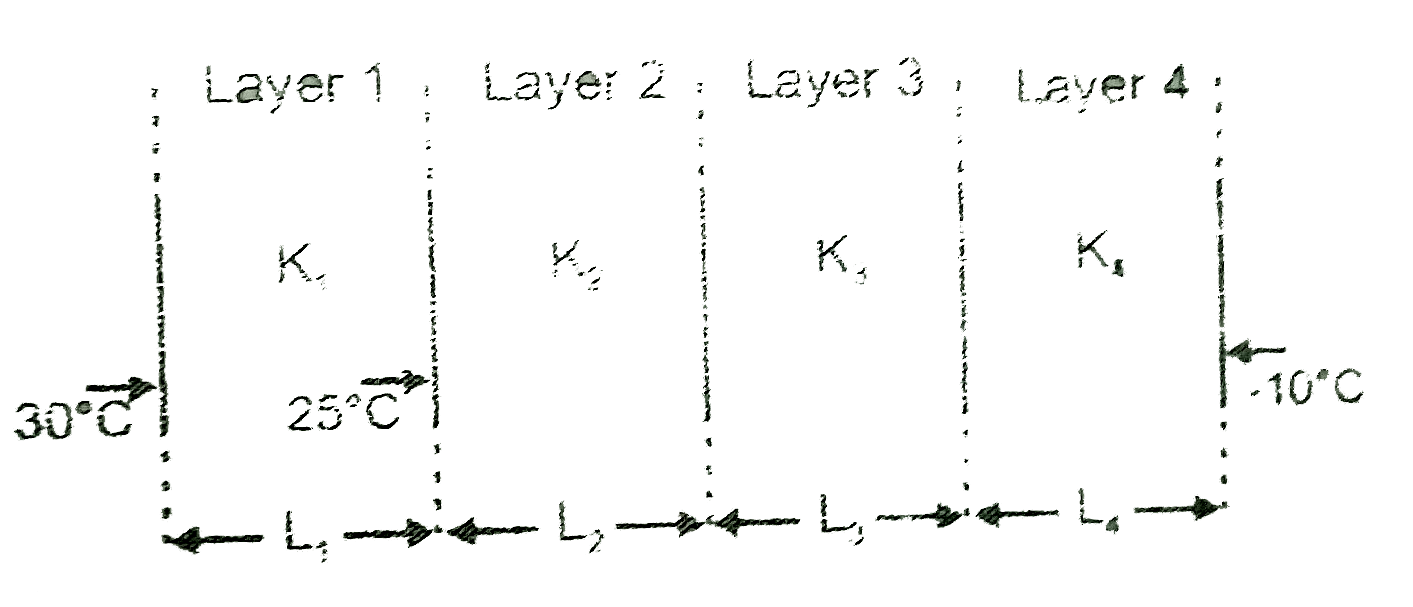
The temperature of the interface between layers 3 and 4 is:
2×10−2
2×10−3
4×10−2
4×10−3
The correct Answer is:A
ΔQΔT∣∣∣layer1=ΔQΔt∣∣∣layer2
⇒0.06×A×51.5×10−2=K2×A×141.4×10−2⇒K2=0.02W/mK
Topper's Solved these Questions
- HEAT TRANSFERBOOK - RESONANCE ENGLISHCHAPTER - HEAT TRANSFEREXERCISE - Exercise-2
1 Video
- HEAT TRANSFERBOOK - RESONANCE ENGLISHCHAPTER - HEAT TRANSFEREXERCISE - Exercise-3
1 Video
- HEAT TRANSFERBOOK - RESONANCE ENGLISHCHAPTER - HEAT TRANSFEREXERCISE - Exercise-1
1 Video
- GRAVITATIONBOOK - RESONANCE ENGLISHCHAPTER - GRAVITATIONEXERCISE - Exercise
21 Videos
- KINEMATICSBOOK - RESONANCE ENGLISHCHAPTER - KINEMATICSEXERCISE - Exercise
65 Videos
Similar Questions
Figure shows in cross section a wall consisting of four layers with thermal conductivities K1=0.06W/mK,K3=0.04W/mKandK4=0.10W/mK. The layer thickness are L1=1.5cm,L3=2.8cmandL4=3.5cm. The temperature of interfaces is as shown in figure. energy transfer through the wall is in steady state. the temperature of the interface between layer 3and4 is:
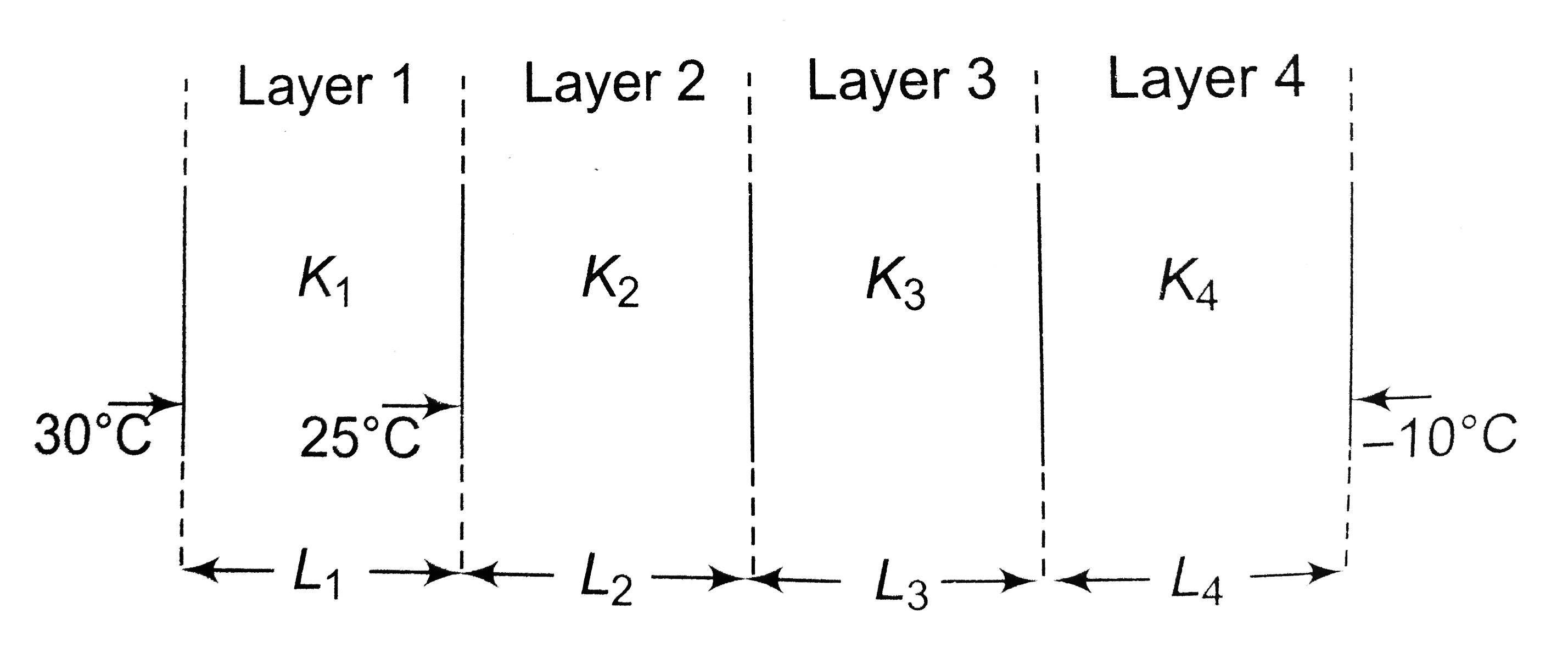
View SolutionFigure shows in cross section a wall consisting of four layers with thermal conductivities K1=0.06W/mK,K3=0.04W/mKandK4=0.10W/mK. The layer thickness are L1=1.5cm,L3=2.8cmandL4=3.5cm. The temperature of interfaces is as shown in figure. energy transfer through the wall is in steady state. the temperature of the interface between layer 3and4 is:

View Solution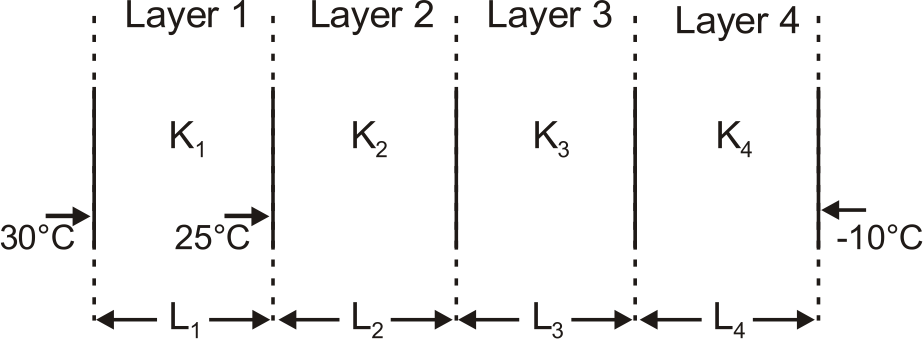
Figure shows in cros section a wall consisting of four layers with thermal conductivities K1=0.06W/mK
K3=0.04W/mK and K4=0.10W/mK. The layer thicknesses are L1=1.5cm,L3=2.8 cm and L4=3.5cm the temperature of interfaces is as shown in figure. energy transfer through the wall is in steady state.
Q. The temperature of the inteface between layers 2 and 3 is
View SolutionTwo bars of thermal conductivities K and 3K and lengths 1cm and 2cm respectively have equal cross-sectional area, they are joined lengths wise as shown in the figure. If the temperature at the ends of this composite br is 0∘C and 100∘C respectively (see figure), then the temperature ϕ of the interface is
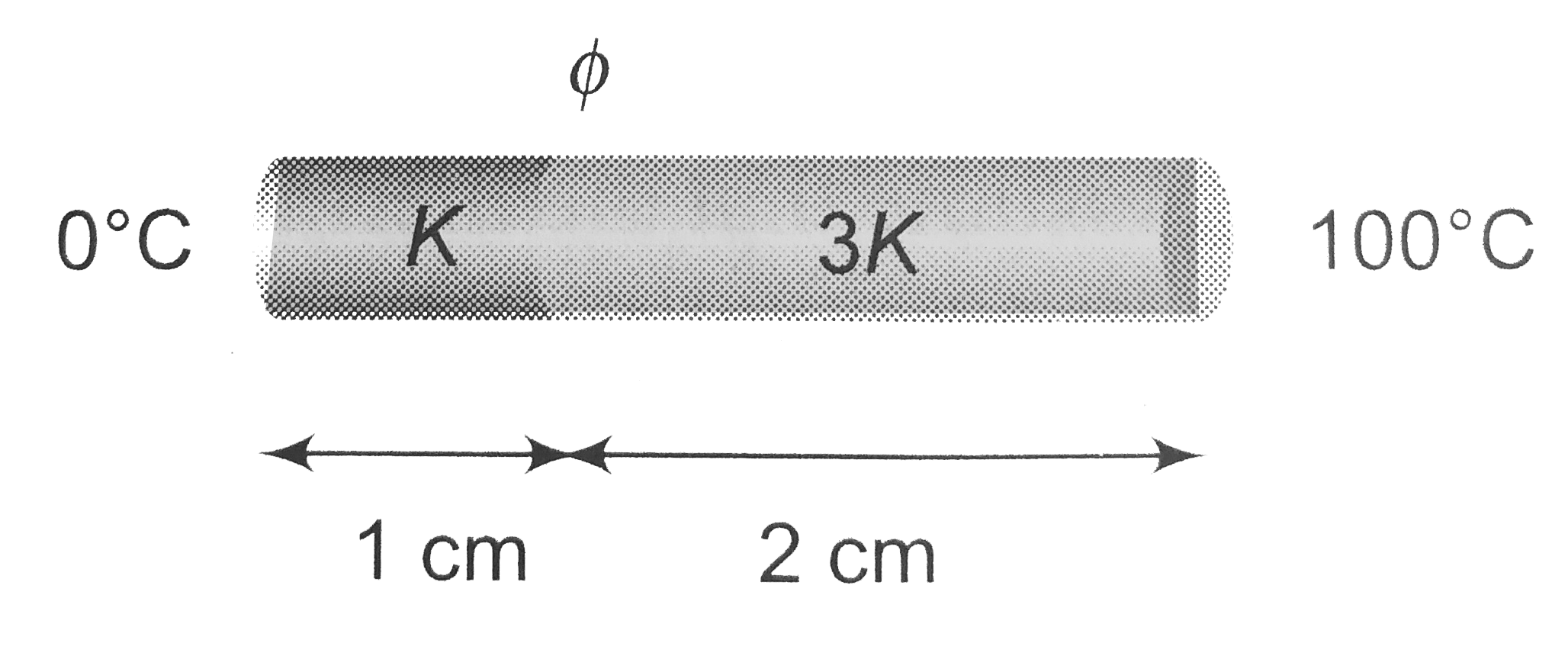
View SolutionTwo parallel plates A and B are joined together to form a compound plate . The thicknesses of the plate are 4.0cm and 2.5cm respectively and the area of cross section is 100cm2 for each plate. The thermal conductivities are KA=200Wm−1C−1 for plate A and KB=400Wm−1C−1 for the plate B. The outer surface of the plate A is maintained at100∘C and the outer surface of the plate B is maintained at 0∘C. Find (a) the rate of heat flow through any cross section, (b) the temperature at the interface and (c) the equivalent thermal conductivity of the compound plate.
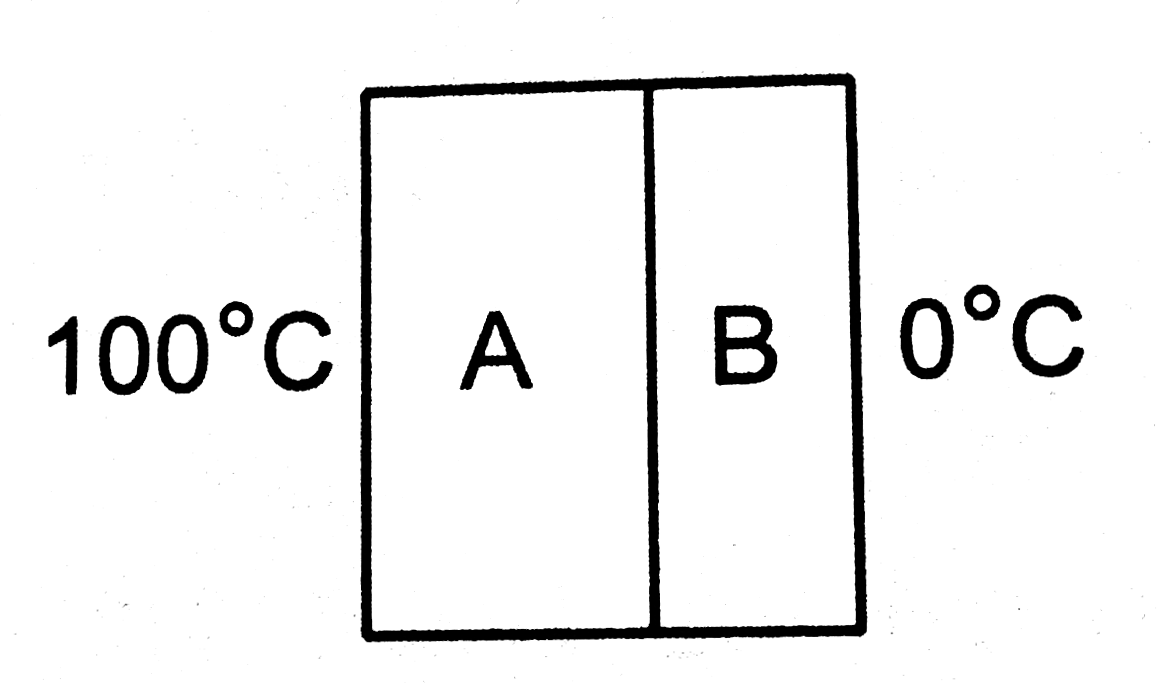
View SolutionA slab consists of two parallel layers of iron and brass 10 cm and 10.9 cm thick and of thermal conductivities 500Wm−1K−1and109Wm−1K−1 respectively. The area of opposite faces are 2m2 each and are at temperatures 373 K and 273 K. Find heat conducted per second across the slab and also the temperature of the interface.
View SolutionTwo plates eachb of area A, thickness L1andL2 thermal conductivities K1andK2 respectively are joined to form a single plate of thickness (L1+L2). If the temperatures of the free surfaces are T1andT2. Calculate.
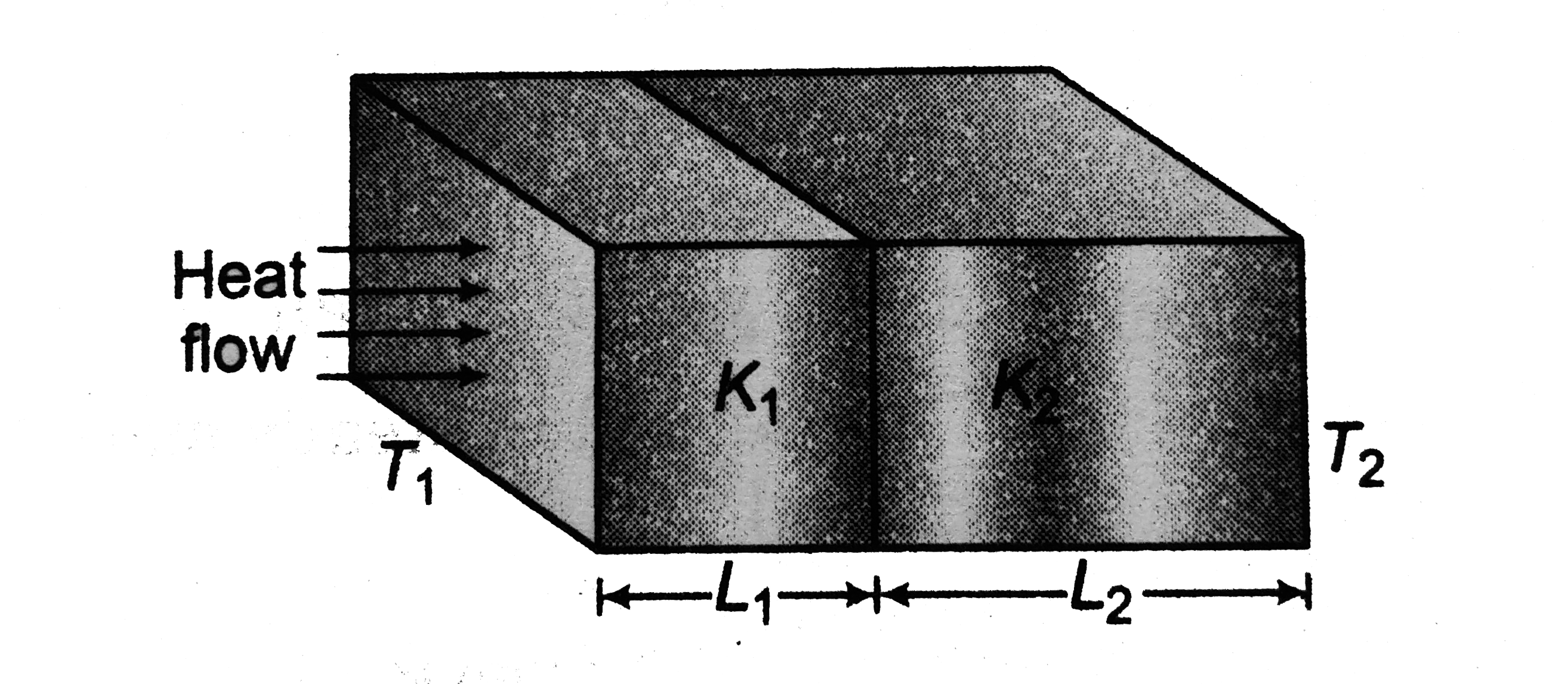
(a) rate of flow of heat
(b) temperature of interface and
(c) equivalent thermal conductivity.
View SolutionThe figure shows an infinite circuit formed by the repetiton of the same link , consisting of resistance R1=4.0Ω and R2=3.0Ω . Find the resisance of this circuit between points A and B.
View SolutionA rod AB of uniform cross-section consists of 4 sections AC, CD, DE and EB of different metal with thermal conductivities K, 0.8,1.2K and 1.5 respectively. Their lengths are respectively L,1.2L,1.5L and 0.6L. They are jointed rigidly in Succession at C, D and E to from the rod AB The end A is mainained at 100∘C and the end B is the maintained at 0∘C. The steady state temperatures p the joints C, D and E are respectively TC,TD and TE Match the following two columns
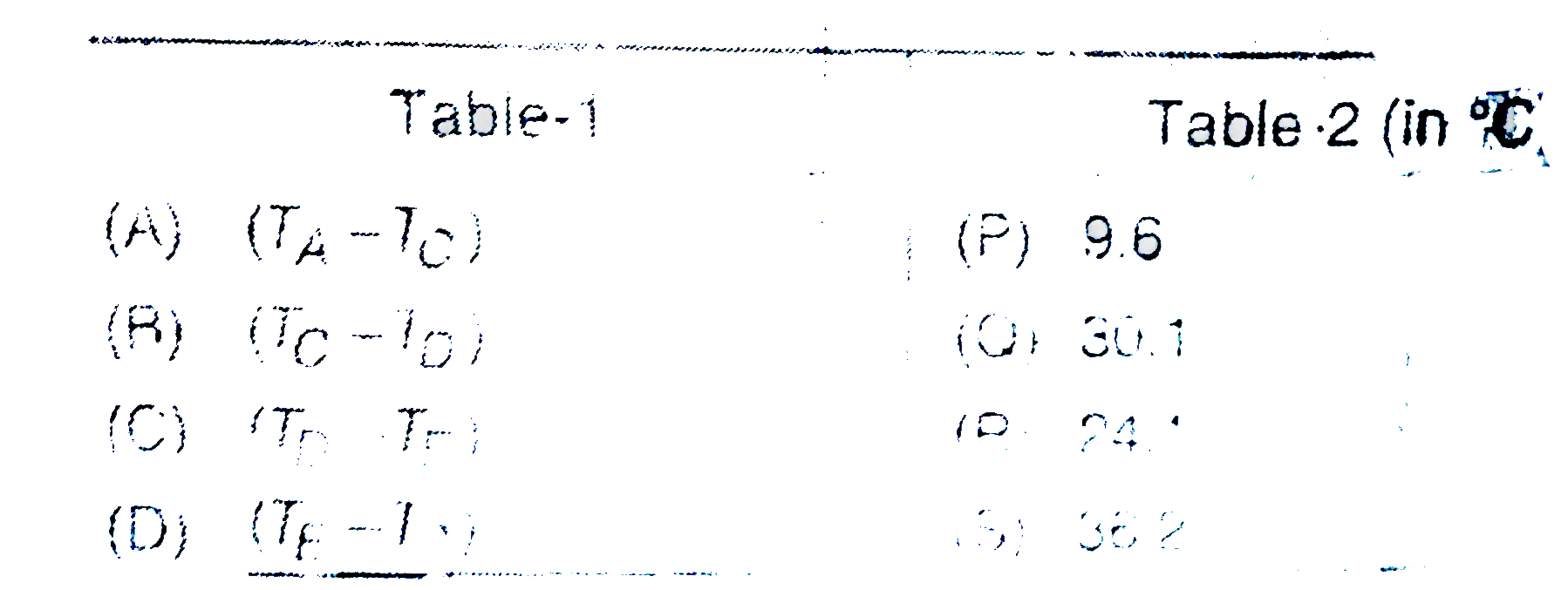
View SolutionFind the current l through then 10Ω resistance in the network shown in figure.
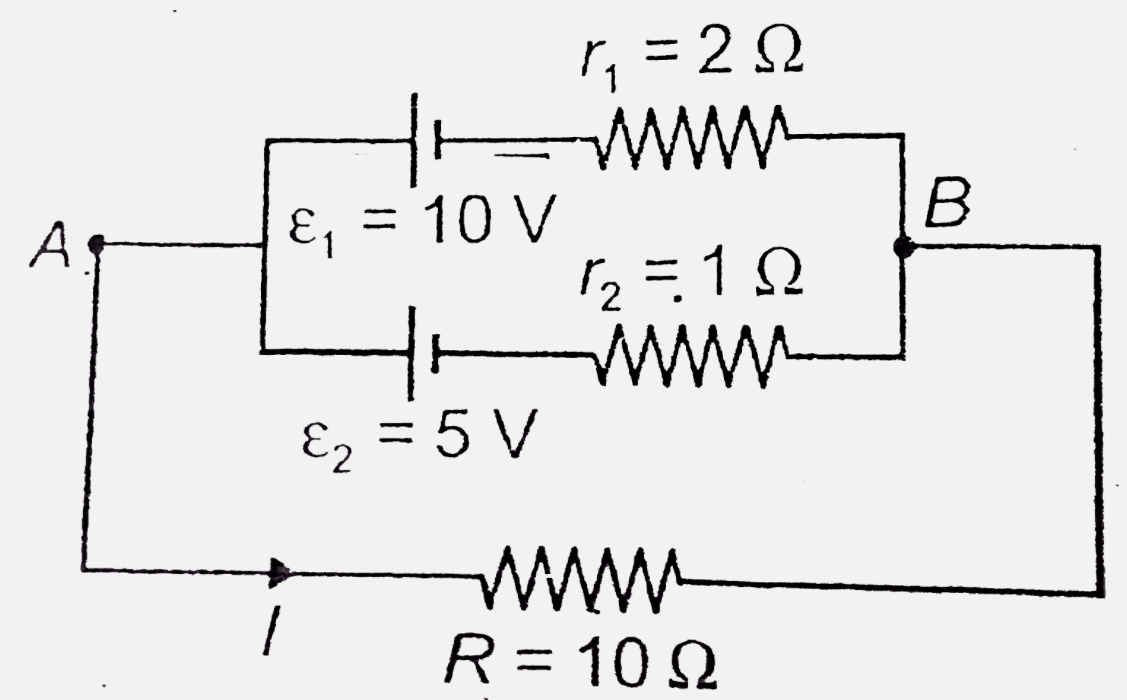
View Solution
